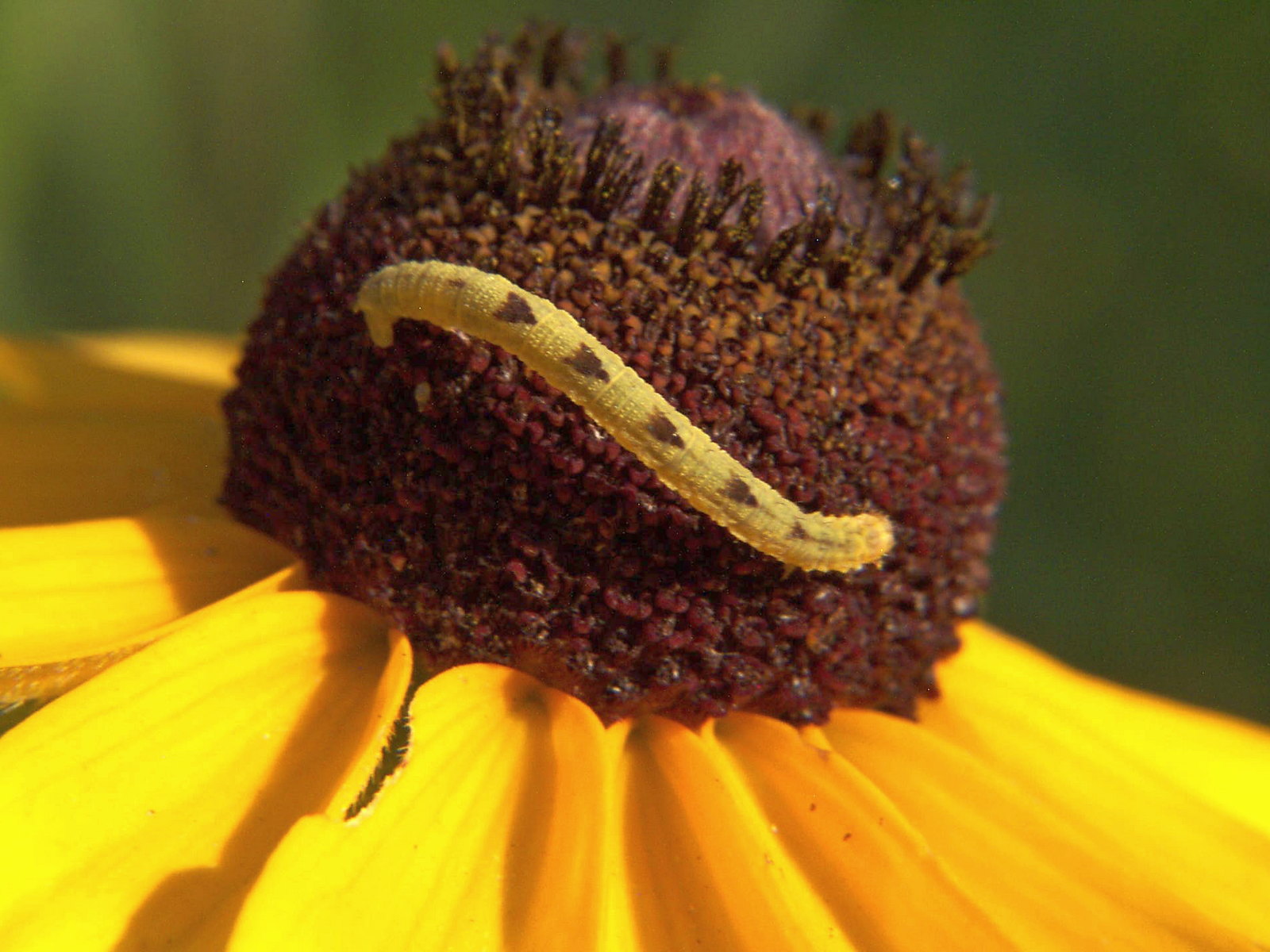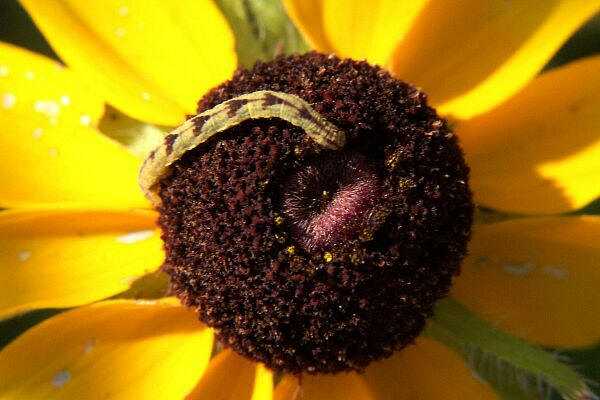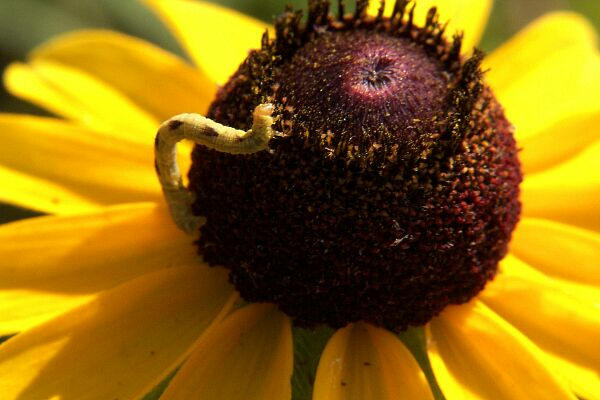Common Eupithecia Moth Caterpillar – Eupithecia miserulata
Family: Geometridae (Geometer Moths, Inchworms)
These larvae feed on aster, clover, coneflower, hoptree, juniper, wild black cherry, and willow. This specimen was feeding on black-eyed Susan, Rudbeckia hirta , a member of the aster family.
The name “Geometridae” ultimately derives from geometer (“earth-measurer”). This refers to the means of locomotion of the larvae or caterpillars, which lack most of the prolegs of other Lepidopteran caterpillars. Equipped with appendages at both ends of the body, a caterpillar will clasp with its front legs and draw up the hind end, then clasp with the hind end (prolegs) and reach out for a new front attachment – creating the impression that it is measuring its journey. The caterpillars are accordingly called loopers, spanworms, or inchworms. They tend to be green, grey, or brownish and rely on their superb camouflage to hide from predators.
Many Geometrids have slender abdomens and broad wings which are usually held flat with the hindwings visible. As such they appear rather butterfly-like but in most respects they are typical moths: the majority fly at night, they possess a frenulum to link the wings and the antennae of the males are often feathered. They tend to blend in to the background, often with intricate, wavy patterns on their wings. In some species, females have reduced wings (e.g. winter moth and fall cankerworm).
Insects & Spiders | Moths Index | Moths | Butterflies Main | Butterflies Index | Skippers



